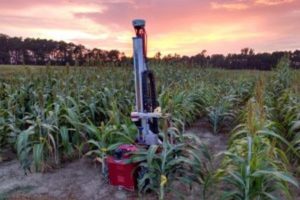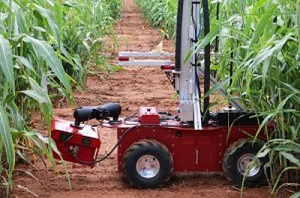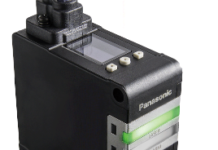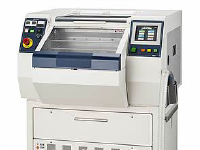
The world population is expected to reach 9.7 billion by 2050. China and India, the two largest countries in the world, have populations totalling around one billion. In four years, by 2022, India is predicted to have the largest population in the world, surpassing China.
This means we need new ways to grow food that are smarter and helps regulate our use of land, water and energy in order to feed the planet and avoid a global food crisis.
Researchers at Carnegie Mellon University’s Robotics Institute believe the answer lies in sensors, artificial intelligence (AI) and robots.
In a new initiative called FarmView, researchers are working to combine sensors, robotics and artificial intelligence to create a fleet of mobile field robots they hope will improve plant breeding and crop-management practices.
According to FarmView’s Senior Systems Scientist, George Kantor, robots can gather data in agricultural fields with an unprecedented level of accuracy and timeliness that can be used to help solve the world’s looming food crisis.
A mobile field robot can gather information that can be used to help growers make better management decisions that allows them to grow more, higher quality food with fewer land and water resources. They can even help crop breeders, produce higher-yielding crops faster.
How can a mobile field robot make a difference. For starters, it can take a visual survey of a vineyard at the start of the season and then use a combination of computer vision and machine learning to predict the expected fruit yield at the end of the season. Armed with this data, the farmer can act by using a robot to prune leaves or thin fruit to maintain an optimal balance between leaf area and fruit load. This action ensures a high fruit quality at the same time, reduces water and nutrient uptake.
“Plant breeding is another interesting application we’re pursuing, where robotically gathered plant phenotype data can be collected over much larger breeding experiments that current manual measurement techniques allow,” said Kantor. “Machine learning tools can then combine the collected phenotype data with genetic and environmental data to help a breeders and geneticists better understand the relationships between genetics, environment, and plant performance.”
“This in turn accelerates the breeding process, allowing breeders to evaluate many more plants each season so that they can more quickly select for desirable traits such as yield or disease resistance,” adds Kantor.
Kantor says this kind of accelerated breeding program could have significant benefit in the developing world such as Subsaharan Africa.

A mobile field robot in the sorghum fields in South Carolina. The FarmView initiative wants to develop inexpensive robotic systems
that small- to medium-scale growers can afford to implement.
The mobile field robot in the FarmView initative is equipped with a camera, a laser scanner that measures the plant’s geometry and a multispectral camera that can see non-visible radiation bands and measures plant function.
“We are collaborating with Clemson University on a project to use robotic phenotyping to accelerate the breeding of sorghum as a biofuel crop. They provide breeding and genetics expertise and conduct field work at research farms in South Carolina and Mexico, where we deploy our robots to collect the necessary data and work together to determine which measurements to take and to interpret the results.
FarmView is also working with Cornell and the University of California Davis (UCD) on a project to increase efficiency and quality in grape production by actively managing vine balance.
According to Kantor the idea is that robotically deployed sensors count grapes and measure leaf canopy everywhere in an orchard and then a decision support system can recommend where the grower should thin leaves or prune fruit in order to keep the vine in balance.
“A well-balanced vine produces high quality fruit while minimizing water use,” said Kantor. “The Cornell and UCD collaborators provide plant science expertise, especially in the area of plant physiology, and they provide access to test sites and an interface to progressive growers through their extension programs.”
The group also worked with several land grant universities led by University of Maryland and including University of Georgia, Colorado State University and Cornell to develop an intelligent irrigation control system for nursery and greenhouse crops.
Advances will not come overnight but they will come as growers get actionable information which helps them make better decisions.
How will robotics change the world of agriculture as we know it?
If you ask Kantor he’ll tell you quite decisively that robotics will change the world of agricluture in three ways: vine balance management for wine and table grapes; robotic phenotypic for accelerating crop breeding; and intelligent irrigation control using sensor networks. Kantor believes that crop breeding is the application is likely to have the largest impact.
“Looking further out, we will begin to see robots doing intelligent manipulation tasks in the field, such as carefully thinning flowers in an apple orchard,” adds Kantor. “These capabilities will be used to help implement the decision making tools we are working on today, closing the loop in the sense that machines will be able to intelligently carry out management tasks as they are needed.”
By: Jennifer Kite-Powell
Source: https://www.forbes.com


















